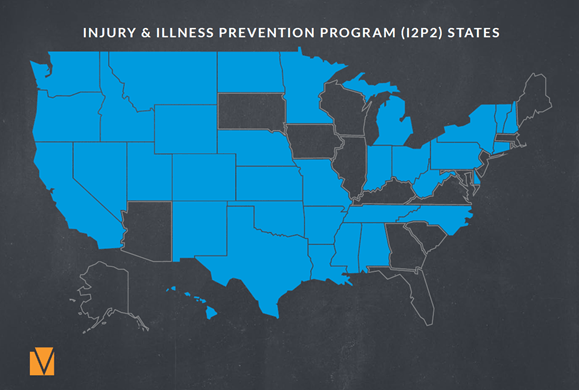How-To: Determining State or Federal OSHA Jurisdiction

How-To: Determining State or Federal OSHA Jurisdiction
Did You Know: Employers under state Occupational Safety & Health Administration (OSHA) plans often receive a citation because they have the federal OSHA workplace poster displayed in their workplace, and not the poster from the state OSHA program.
All U.S. states have an option of either participating in the federal Occupational Safety & Health Administration (OSHA) regulatory system, or running a separate state OSHA program.
In some cases, there are two layers of occupational safety regulation. To make things more confusing, some states have a ‘hybrid’ approach, like the state of Tennessee, which has a state OSHA program with jurisdiction over general industry and construction operations, but cedes jurisdiction over the maritime industry to the federal government. Some state OSHA programs have standards that are identical to federal OSHA standards, while others have standards that are slightly different and only in places. A few, like California’s Cal-OSHA and Michigan’s MI-OSHA, have standards that are significantly different. If applicable, employers must ensure they provide the appropriate safety training as required by the state program.
If you live in one of those blue states on the map below, your state runs its own OSHA program and has its own inspectors to enforce your “as good or better” laws. That doesn’t mean those federal OSHA law books with the mundane names don’t apply to you. In fact, most of the 27 state-run OSHA programs adopted them entirely from the federal government or renamed them, and many have written state-specific rules and statutes that apply in addition to the Federal laws.
For example, Minnesota (one of those blue states on the map) has a rule requiring chemical toilets on construction sites have a light bulb of a certain wattage during winter months on construction sites as an attempt to provide some kind of warmth. Your tip here is to know what laws apply to you. If the Federal government has jurisdiction in your state, you have only the Federal OSHA laws with which to comply.

Source: https://www.osha.gov/dcsp/osp/index.html
An employer’s job is to identify and do all it can to prevent and respond to recognized hazards. So whether or not we’re talking about state or federal training standards, your organization is bound by OSHA’s General Duty Clause, which states…
OSHA’s General Duty Clause
SEC. 5. Duties |
(a) Each employer -- |
|
(b) Each employee shall comply with occupational safety and health standards and all rules, regulations, and orders issued pursuant to this Act which are applicable to their own actions and conduct. |
The General Duty Clause is OSHA’s catch-all rule for enforcement. The clause is universally applicable—that’s for all employers. OSHA doesn’t have a rule or standard covering every single hazard for every possible working environment. So if there’s a hazard or dangerous circumstance in your work environment but no specific federal safety standard tied to it, the General Duty Clause may be applied focusing on key phrases in the clause which are “recognized hazards” and “causing or likely to cause”.
Additionally, if an employer recognizes a hazard beyond state and federal OSHA standards that employee training would help mitigate, the employer is responsible for protecting its employees, developing safeguards, and providing the necessary safety training.
Map of 34 I2P2 States

Additionally, 34 states follow the Federal OSHA recommendation to have a general safety program, commonly called I2P2—that’s “Injury & Illness Prevention Programs.
For those of you who don’t know what a “general safety program” is, think about on-boarding a new employee or if you were a new employee yourself.
As an individual you want to know how…
- Your company addresses your safety at work,
- Who you go to with safety concerns
- What your role is as an individual
- What sort of topics you will receive training for
- How often you will receive safety training on each topic
- What your safety committee does
- What are your company goals around safety
- How your workplace addresses and corrects hazards.
That is the nutshell description of a general safety program.
Learn more about OSHA training.



